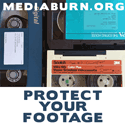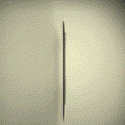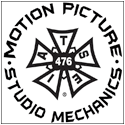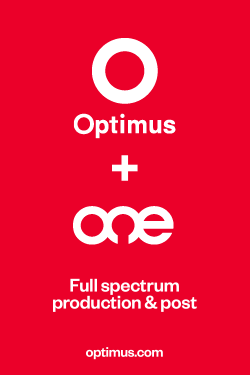
Film is better. So there. Regardless of whether film has more resolution, or whether it is more or less convenient, whether it is cheaper or more costly compared to the newer digital data technologies, I still believe film is more authentic and organic with its genuine film grain and more complex soulfulness.
Some top cinematographers also think that if you want the best you should shoot film. Wally Pfister, cinematographer of The Dark Knight, Inception and the upcoming Moneyball, is emphatic.
 “The battle that we have to fight as cinematographers is to not let anybody treat us like we are consumers by using marketing techniques to push technology that’s not better than what we have. Good enough isn’t good enough,” he says.
“The battle that we have to fight as cinematographers is to not let anybody treat us like we are consumers by using marketing techniques to push technology that’s not better than what we have. Good enough isn’t good enough,” he says.
Nowhere is 24P near the resolution of 35mm film. Put it side-by-side with anamorphic and it’s off the charts. No comparison. I see no reason for us, or the public, to settle for that. Why use an inferior product to capture our images, when we want to see all the nuances and into the darkest details. I want to push the envelope.
I can’t short-change my director by taking a chance that the perfect shot is going to be ruined because we’re using a format of lesser quality than film. Film has an enormous amount of exposure latitude and dynamic range, which gives us infinite creative ability in creating images. I can underexpose it by 3 stops and overexpose it by 5 stops within the same frame and see the entire spectrum on the screen. That’s simply not possible in any digital format I’ve seen. Every digital camera is trying hard to emulate 35mm film, and there’s a reason for that.
Still enthusiastic about the HDSLR revolution, but –
 I was an early adopter and advocate for the HDSLR cameras and revolution. I am still enormously enthusiastic about this small high quality format, especially when it’s in the hands of an experienced photographer, someone who is a serious about light, lensing and composition.
I was an early adopter and advocate for the HDSLR cameras and revolution. I am still enormously enthusiastic about this small high quality format, especially when it’s in the hands of an experienced photographer, someone who is a serious about light, lensing and composition.
HDSLR’s small footprint and cost profile is nothing short of miraculous. But when you move up the food chain to the most sophisticated systems, the costs and lack of mobility are comparable to shooting film.
While the cost may no longer be a definitive advantage, there is a real perceived value added in the experience and comfort of seeing the footage in real time and not relying on a degraded video assist image for reference. In many cases the images are tweaked and colored on set.
Varying opinions about the value of film vs. HDSLRs
 Around town opinions are mixed. Reid Brody says that Filmworkers still sees a healthy mix between film and digital. Filmworkers’ Digigog division was created to make the digital data painless and transparent and his state-of- the-art color suites are still busy, as are others around town.
Around town opinions are mixed. Reid Brody says that Filmworkers still sees a healthy mix between film and digital. Filmworkers’ Digigog division was created to make the digital data painless and transparent and his state-of- the-art color suites are still busy, as are others around town.
Reid makes the point that truly talented colorist is even more essential than ever because of a number of reasons, not the least of which is that many jobs using are using multiple platforms mixing different chips and codecs in a single project.
Reid also argues that so many projects are repurposed into different forms today that it pays off to optimize footage with the best color technology and a skilled experienced colorist. As an experienced filmmaker, I could not agree more.
Film rentals a shrinking item at Schumacher Camera
At Schumacher Camera, James Pope, who was an early adopter of the new technologies, says his film rentals diminished to less than 10% of the pie. While many of the new fangled cameras go out with PL mounts and lovely professional glass, there is also a strong rental market for 5ds using standard Canon mounts or adaptors.
James says that business is rocking, but the protocol has changed somewhat. For digi rental it has become common for the post houses to huddle with the camera house and the A/C before deployment, to assure that setting are proper on the rig.
Optimus’ Leffel says the world has moved on and so should film
 Many productions are now handling their own dailies on set but Optimus’ says they prefer to handle the dailies themselves to optimize quality. As the new Big Chief at One, he’ll have more control than most.
Many productions are now handling their own dailies on set but Optimus’ says they prefer to handle the dailies themselves to optimize quality. As the new Big Chief at One, he’ll have more control than most.
As for film, Craig says, “The world has moved on. Rightfully so in my opinion. Digital captures offer filmmakers a control and instant feedback they’ve never had with film and shouldn’t easily give up.
“Maintaining a view that film is better because it’s film is both ignorant and short sighted in my view. I’ve worked on hundreds of hours of dirty, underexposed, poorly processed, shitty film in my colorist career, as well as all of the amazing, nostalgically beautiful hours of film normally associated with the majesty of film,” Leffel continues.
“Those days are gone, and film is on its way to taking its rightful place in history.”
He believes that the new technologies may offer equal or superior latitude to the highest quality film.
I still prefer film but what do I know? Film appears to be in the rear view mirror, along with a number of my favorite things: vinyl, Weber carbs, Nagras, tube amps, newsprint, table radios, cash…
David Rosen is an independent director, new media evangelist, and well known Chicago-based provocateur.
















